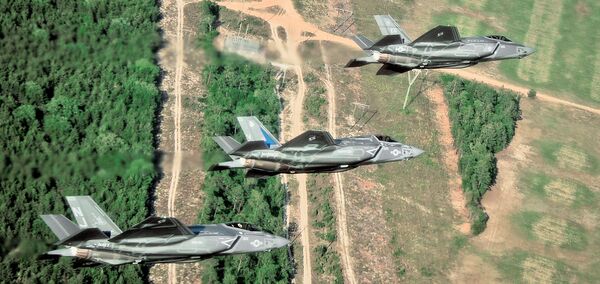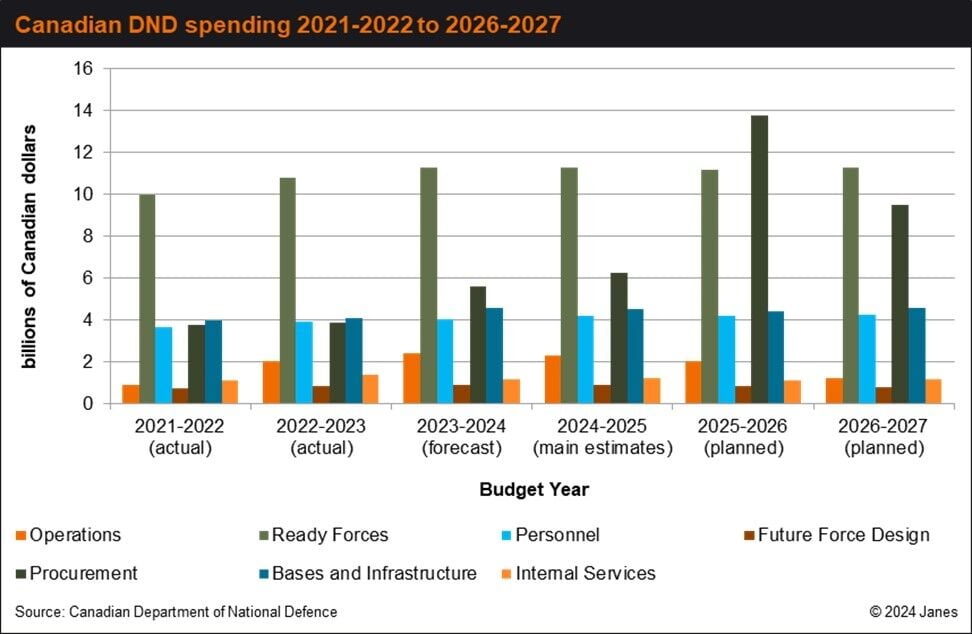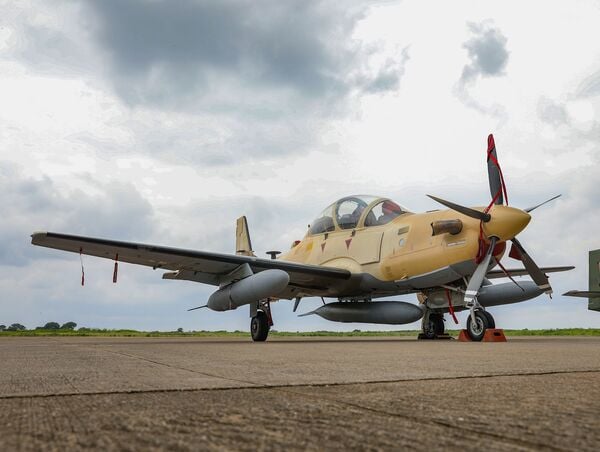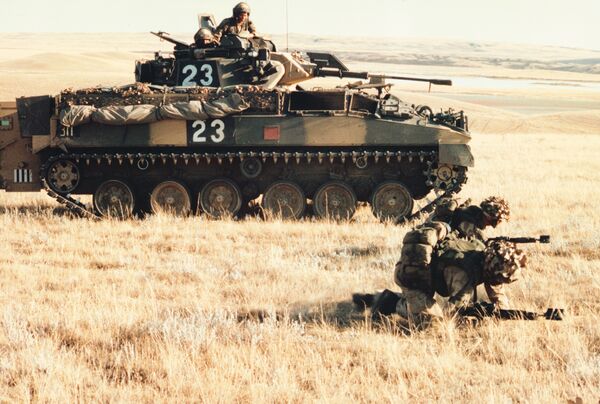- About
- Intara
- Capabilities
- Advisory
- Resources
- News
- Store
GAO finds problems with F-35 costs and technology in new report
01 June 2023
by Zach Rosenberg


A US triservice formation of the US Air Force F-35A (lead), the US Marine Corps F-35B, and the US Navy F-35C. (US Air Force)
On 30 May the US Government Accountability Office (GAO) released a report about the Lockheed Martin F-35, finding that the programme has not adequately explained a cost increase of USD13.4 billion since 2019, that the upgraded Block 4 version has run into technical snags and a USD1 billion cost increase, and that the US Department of Defense (DoD) has not fully defined requirements for an engine cooling system upgrade.
The USD13.4 billion increase is because of greater acquisition costs, the GAO wrote. “The programme attributes the increased procurement cost to additional years of costs related to airframe and engine production, along with support costs for equipment, technical data, and training,” the GAO wrote. “According to programme officials, the programme is deferring the delivery of these 215 aircraft to later years at the request of the air force.” F-35 development costs have increased by a total of USD21.1 billion between 2012 and 2021, the GAO found. The programme's total 77-year lifespan cost now hovers around USD1.7 trillion.
Canada unveils CAD33.8 billion defence budget for 2024–25
18 April 2024
by Jeremiah Cushman


Actual and planned Canadian defence spending by category from 2021–22 to 2026–27. (Janes)
The Canadian government released its fiscal year (FY) 2024 defence budget on 16 April. The document projects spending of CAD33.8 billion (USD24.6 billion) in 2024–25, including adjustments from the Budget 2023 Refocusing Government Spending Exercise and incremental funding in the 2024 budget, although it warns that forecast amounts may change as programmes move through implementation. This is an increase from the forecast CAD29.9 billion spending in 2023–24, according to the document.
The 2024–25 main estimates produced by the Treasury Board projected defence spending of CAD30.6 billion, a small increase from the latest spending estimate for 2023–24, which totalled CAD30.3 billion. This is a 14% increase over the initial 2023–24 main estimate of CAD26.5 billion, according to Treasury Board figures. Expenditures in 2022–23 totalled CAD26.9 billion.
FIDAE 2024: Embraer sees market for 490 Super Tucanos
11 April 2024
by Zach Rosenberg


A Nigerian A-29 Super Tucano is pictured here. Embraer Defence CEO Bosco da Costa sees potential for up to 450 Super Tucanos over 20 years, including from Africa. (US Africa Command Public Affairs)
Embraer Defence & Security sees a market for up to 490 A-29 Super Tucano trainer and attack aircraft over the next two decades, Embraer president and CEO Bosco da Costa Jr told Janes on 10 April at the FIDAE 2024 airshow in Santiago, Chile.
“We are in touch with several countries around the world, not only here in South America, but we have some potential [customers] in Africa, in Asia, and in Europe as well,” said da Costa. “We are in advanced conversations with countries in Europe [and] in advanced conversations with countries in Asia. I cannot disclose the countries because the defence procurement process does not allow us to do that. But I assure you that we are now in a final stage in some of them.”
IT²EC 2024: Saab to continue supporting British Army live training
11 April 2024
by Olivia Savage


Saab has been contracted to upgrade the army's live training capability. Pictured are troops practising their debussing drills from a Saab DFWES-equipped Warrior infantry combat vehicle in Alberta. (Janes)
The British Army has signed a GBP60 million (USD75.7 million) three-year support contract with Saab to improve its live training capability.
The contract – Instrumented Live Training (ILT-D) – is replacing the existing Direct Fire Weapon Effects Simulator (DFWES) contract with Saab and will involve modernising its live training capabilities to improve interoperability and address obsolescence.
ILT-D is essentially a mid-life upgrade of the DFWES capability that will comprise upgrading and providing the latest soldier and vehicle training systems as well as EXCON software to ensure it remains relevant to the army's evolving training needs and is interoperable with its allies, Joakim Alhbin, the vice-president of Training and Simulation at Saab, informed Janes and other media representatives at the International Training Technology Exhibition & Conference (IT²EC) 2024.
DFWES is a laser-based Tactical Engagement Simulation (TES) capability that simulates direct and indirect fire.
On 30 May the US Government Accountability Office (GAO) released a report about the Lockheed Martin ...
Latest Podcasts
Iran Israel analysis
In this podcast Janes analysts discuss the Iranian attacks on Israel on the 14 April. They highlight the military systems used by Iran and the performance and impact of these on Israel. They also discuss the implications of this attack goi...
Listen nowJanes Case Studies
Using Janes Intara to build a common intelligence picture: Russian build up on the Ukrainian border
View Case StudyNews Categories
 Industry Details
Industry Details